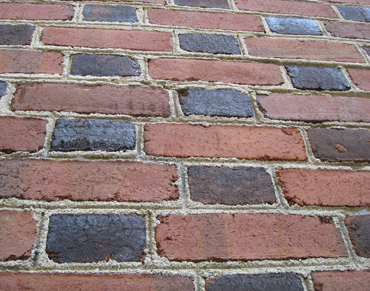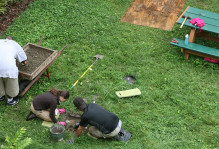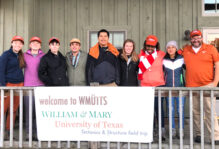1,000 Giddy Arcana*: Bond. Flemish bond.
In the beginning, there is the artifact. Interpretation of what historians refer to as “material culture” enables someone to draw inferences about the everyday life people from the items they left behind.
I asked several people for their definition of material culture. Historian Susan Kern says it’s “getting history from ‘stuff’.” For instance, the glazing on a ceramic fragment might speak volumes about the socioeconomic status and likely national origin of its owner. Williamsburg and the Historic Triangle are full of such stuff, which can range in size from the Wren Building to a tobacco seed. Each artifact oozes historical context, but only if you know how to look.

A sample of glazed-headed Flemish bond brickwork. You find it all over campus, but this is from Phi Beta Kappa Hall.
Take Flemish bond brickwork. A course of Flemish bond is laid alternating bricks longways, then endways—stretchers then headers, in masonry-speak. The really fancy stuff is glazed-headed Flemish bond, in which the headers (the short bricks) are fired to give a nice, elegant contrast. Today, it’s the default pattern for the veneer of even the newest buildings on the William & Mary campus, but when a trained interpreter of material culture sees Flemish bond brickwork in a house that dates from 18th Century, it’s a sign that the house was one of affluence.
“In the 18th Century, if you’re using Flemish bond, you’ve got brick to spare,” Carolyn Whittenburg says, “You’re also at a level of society that was able to pay those brickmasons to do that pattern.”
Whittenburg is the director of NIAHD, the National Institute of American History and Democracy. NIAHD is observing its tenth year of teaching students how to get history out of stuff. Participants work with material-culture experts in the NIAHD programs and leave the program with at least the beginnings of a skill set (and a mindset) of how to draw a compelling scholarly narrative from something most people wouldn’t notice, such as the way a building’s bricks are laid.



No comments.
Comments are currently closed. Comments are closed on all posts older than one year, and for those in our archive.